How To Stretch Acrylic Paint
So, the other day I got a few acrylic paints from a friend for my birthday.
Not only was I incredibly pleased with this fine gesture, I knew I could immediately use them in a current piece I was working on.
As I sat in my studio late one evening, I went ahead and unscrewed the top of the Alizarin Crimson and started squeezing it out onto my palette…
…and what I saw shocked me…
While dabbling in the medium of acrylics for several years, I was taken aback by the sheer thickness of this acrylic paint.
Sure, I had some experience in oils, but seriously, the viscosity of this acrylic had me double checking the tube to make sure that I wasn't actually using an oil paint because it was that thick!
Now, here's the deal:
When using acrylics, you will find that there are two primary methods you can use in order to thin out paints – water and mediums.
However, the thickness of this paint almost had me wondering if I should reach for my trusty odorless mineral spirit instead.
But, I did what any artist would do and got creative with my thinners to see exactly what the results would be.
…and you know what, it worked!
So, with this experience of dabbling in such thick acrylics, I was fast to think that many other artists out there had this same exact scenario as me.
Here's what you will need to do in order to make acrylic paint thinner:
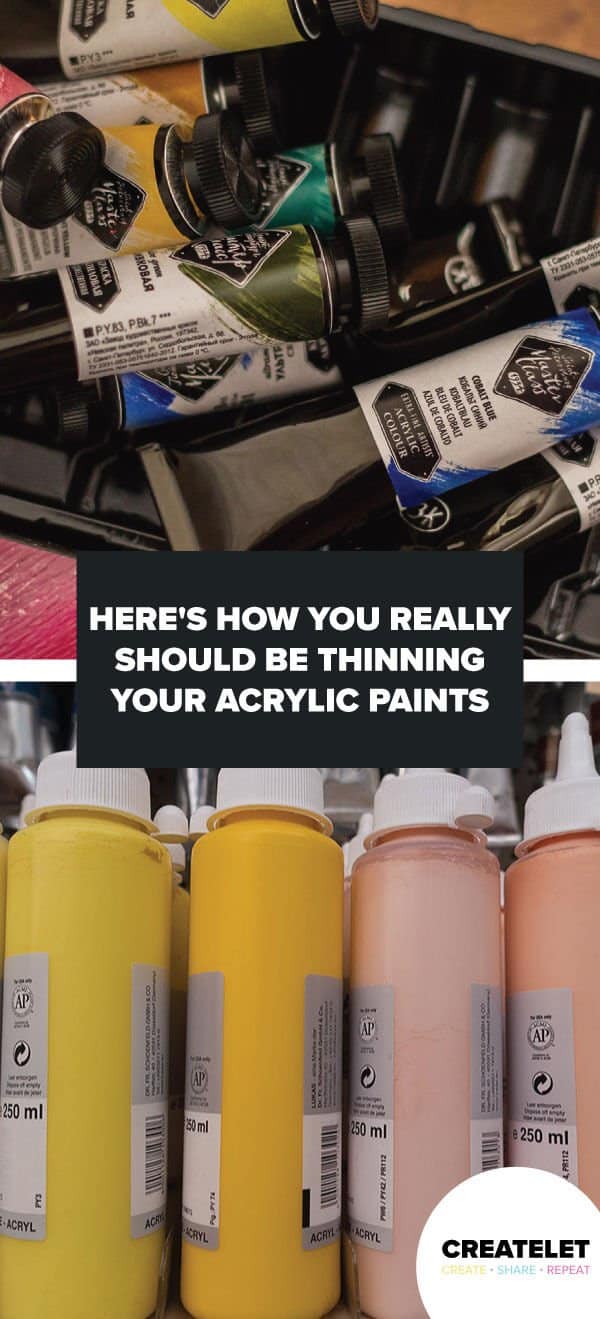
Understand The Construction Of Acrylic Paints From The Ground Up
Any seasoned artist will know when to use a solvent such as turpentine or odorless mineral spirits, but furthermore, a great artist should know the products that they are using form the inside out.
While it might seem daunting at first to understand some of the more popular mediums, it really is quite simple…
Here's what you need to know about the construction of acrylic paint:
Acrylic by its very nature is a water-soluble paint, this means that when mixed with water it will slowly dissolve.
By comparison, oil paints are not water-soluble. Therefore, you cannot use water to thin out a painting that is reliant on oils. Instead, you must use more powerful solvents like odorless mineral spirits.
So, what makes acrylic paint water-soluble but oil paint not? It comes down to the binding agent within the paint.
Acrylic paints more often than not rely on an acrylic polymer emulsion. This particular substance is what gives acrylic paint its water solubility.
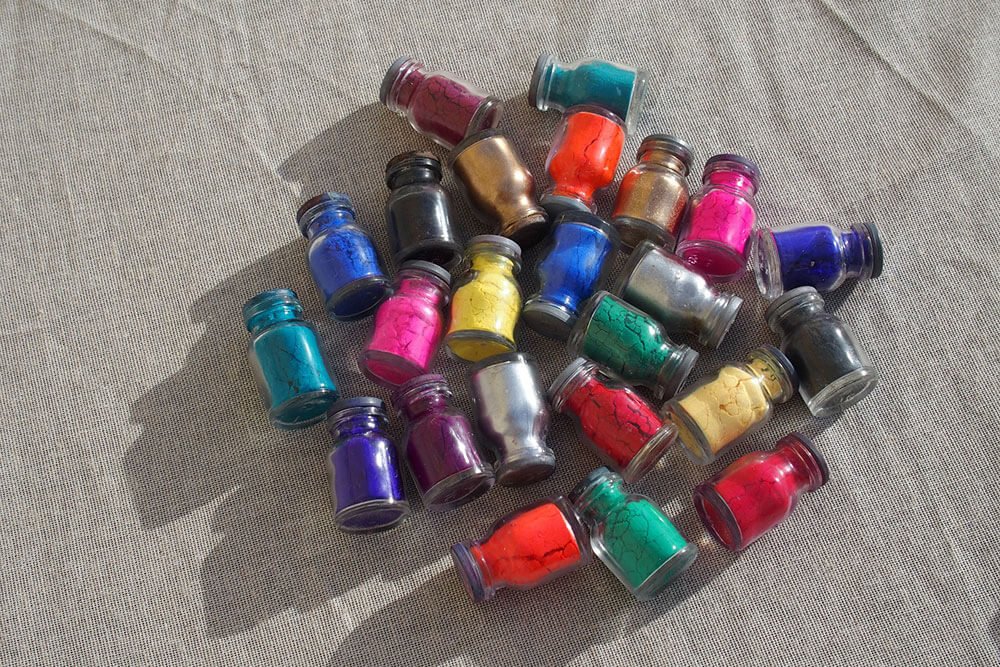
Furthermore, this acrylic polymer emulsion is mixed with pigment to give acrylic its color.
Simply put, when you mix either water or another medium with acrylic paint, it will help to breakup or thin the paint coating to give you a much lighter consistency that can be akin to a watercolor or gouache paint.
Water Is Often The Primary Thinner – Just Take It Easy
Water is a great and extremely cheap alternative to some of the pricier mediums you may find online and elsewhere.
However, it's worth mentioning that you can't just apply water blindly to your acrylic paints…
…you will need to exercise some caution!
Therefore, a general guideline set by many acrylic paint manufacturers is that you shouldn't mix more than a 1:2 ratio (50%).
Over saturating your acrylic paint with too much water may result chipping or peeling of your acrylic paint, especially if applied to a primed surface (we will dive into this in a minute).
To try and moderate the thinning process you can either mix your paint with water either on a separate palette or in a small cup. This will help to prevent any seepage of the water with other colors on your palette.
Lastly, while we highly advocate the use of palette knives as the primary mixing tool, the water and acrylic solution will likely be too thin. Therefore, you will want to use a cheap separate brush to do the mixing for you – just be sure to rinse immediately thereafter so you aren't trying to remove dried acrylic paint from your brush.
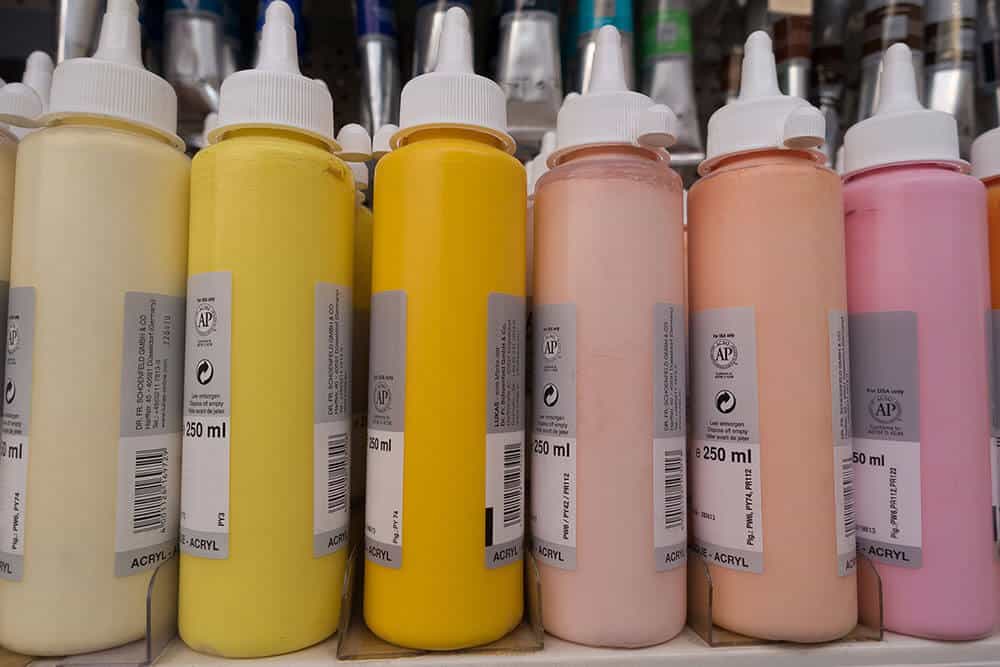
Excellent Mediums You Can Use As An Acrylic Paint Thinner
Largely marketed as 'flow improvers' these thinners are created specifically to work you're your acrylic paints.
One of the flow improvers that many artists like to rely on is this one by Winsor & Newton.
With the ability to get your acrylic paint all the way down to a stain (even thinner than a wash), it can give you a whole world of options and techniques to explore when using acrylics.
But that's not all:
Unlike water, you don't have to worry about your paint peeling or thinning when you use this type of flow improver.
Now for folks looking to go outside of the Winsor & Newton offering, another great option would be the Liquitex Flow-Aid Fluid Additive.
Remember we were talking above about the acrylic polymer emulsion that is used as the binding agent for acrylic paints?
Well, in this bottle of Liquitex, it is 100% acrylic polymer emulsion.
This means that unlike water, you don't have to worry about going over a specific ratio that may cause peeling or chipping of the paint.
Instead, you can keep adding this medium until you get the exact results you desire.
When it comes to long term preservation of a piece, this will be a smart pick to go with given that it relies on the same ingredients that are already found within the acrylic paints themselves.
Note: If you plan on using these same flow additives across other mediums such as oil, you likely won't achieve similar results.
Still Not Seeing The Results You Want? Why Are You Thinning So Much In the First Place?
One thing that many artists are guilty of (myself included), is that we get so wrapped up in a piece and may expect certain results only to be disappointed…
…and that's completely ok!
However, it's worth reinforcing that sometimes we should step back for a minute and examine our process a bit more closely rather than just mixing countless mediums to try and thin an acrylic paint.
Therefore, we would recommend this:
If you are going for a certain shade and aren't getting there when thinning your acrylic paint, is it just simply a question of mixing the right colors together?
Regardless of the reason however, it's important that we always try to approach problems differently and really rely on that creative instinct that we are already so good at using!
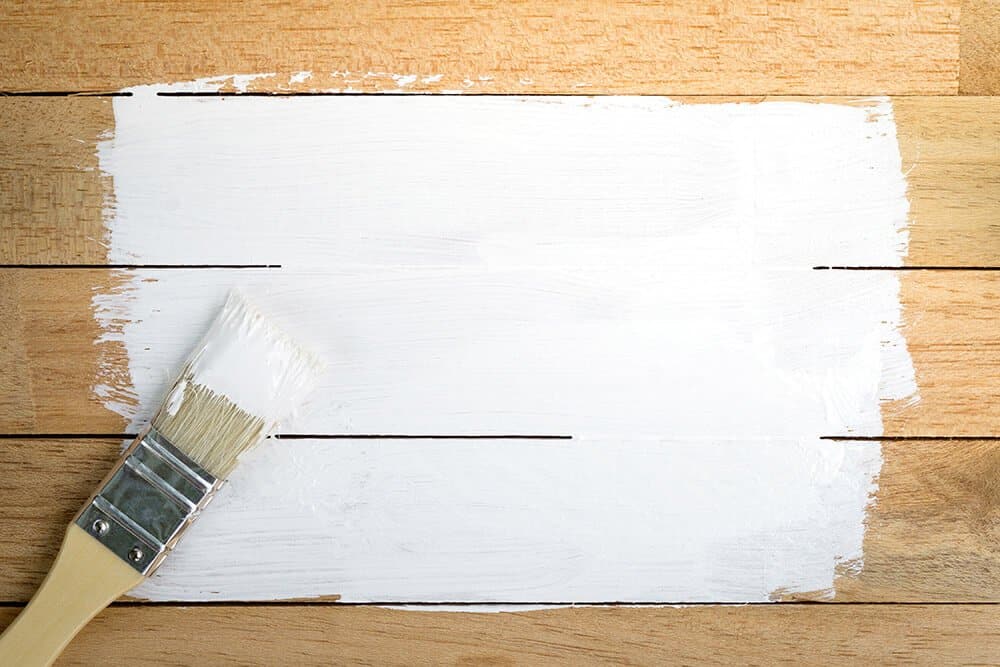
Working With A Primed Layer Will Help Produce Results
If you make your own canvas or are simply trying to use your thinned out acrylics on a non-traditional surface such as metal, wood, or something else, then it may be worth noting that you should at minimum, use a primer of sorts.
One staple of any artist's studio, and one that we find ourselves recommending time and time again is gesso.
Gesso is simply a primer that will easily attach to most surfaces traditional or otherwise and provide an excellent base for your acrylic paint to attach to.
If you are thinning your paints to a wash or even a stain, then you will want to make sure that there is some primer involved.
Not taking this step will likely result in the surface just simply sucking up all the paint without giving you the results that you are trying to achieve.
What Type Of Brush Are You Using For Your Thin Acrylic Layer?
Depending on where you are at in the painting you are currently working on, you will often want to make sure you are using the right type of brush.
While this may seem a bit elementary for some of the more seasoned artists out there reading this, it's worth reminding the folks who are undertaking acrylic painting for the very first time.
If you find yourself using a standard round #6 brush to lay down your initial wash on a 20" x 24" canvas, you will want to rethink your approach.
In the case of the initial wash for your painting, you will want to go with a much wider brush (think at least a couple of inches).
While you could purchase a nice wide brush from an art store, if you plan on having a multi-layer paying, then you can likely get away with using a brush purchased at your local hardware store.
While significantly cheaper, a foam brush (as opposed to a bristle brush), will be able to get a much more even coat of the thinned out acrylic paint onto your surface of choice.
This will not only yield better results for your painting as a whole, but will save you from the frustration of trying to brush out imperfections in the surface when using a much smaller detail brush.
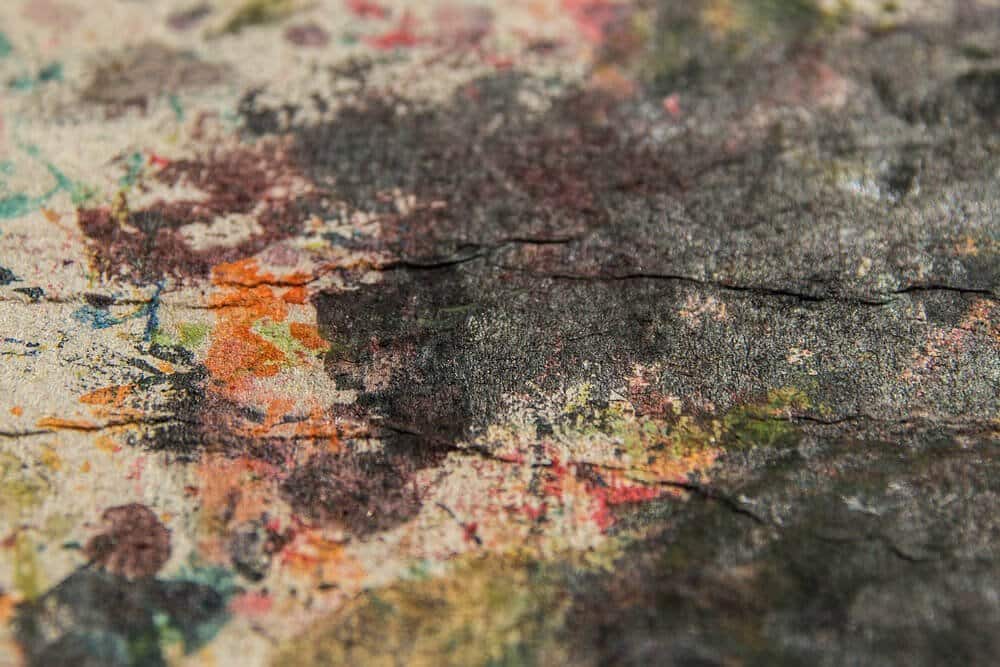
Never Forget Fat Over Lean When Using Thinner Acrylic Paint
One of the cornerstones to proper painting technique is to fully utilize the fat-over-lean approach.
Used by both beginning and seasoned artists alike, this technique follows the thought process of painting in layers.
While you may have implied it from the name already, fat over lean simply means that for every layer you put down on your surface, it should always be thicker than the previous layer.
If you think of your painting like a cake, the thinnest layer should be on the bottom and the thickest one should be on the top.
Now you might be scratching your head wondering why this is important in the scope of thinning acrylic paints?
Here's why:
If you start applying really thin layers to the top of your painting, even if you use a flow additive like some of the mediums covered above, you open up your artwork to cracking.
Given the natural fluctuations in the drying process coupled within environmental conditions, any drastic contraction in the acrylic paint layer may cause it to instantly crack.
Therefore, while it might be tempting to add a light wash over the sky in a beautiful landscape painting to give it a nice light ochre tint to it, you may open your beautiful piece to cracking, so proceed with restraint.
This Isn't All The Methods To Thin Acrylic Paint
While we would like to say that this is every single solution used to thin acrylic paint, we would only be fooling ourselves.
Surely you may have employed a few non-traditional ways yourself, if so, we would like to hear about it!
Drop us a note on our Facebook page and we would love to hear your methods to thin acrylic paints!
How To Stretch Acrylic Paint
Source: https://createlet.com/acrylic-paint-thinner/
Posted by: russellfaidle.blogspot.com

0 Response to "How To Stretch Acrylic Paint"
Post a Comment